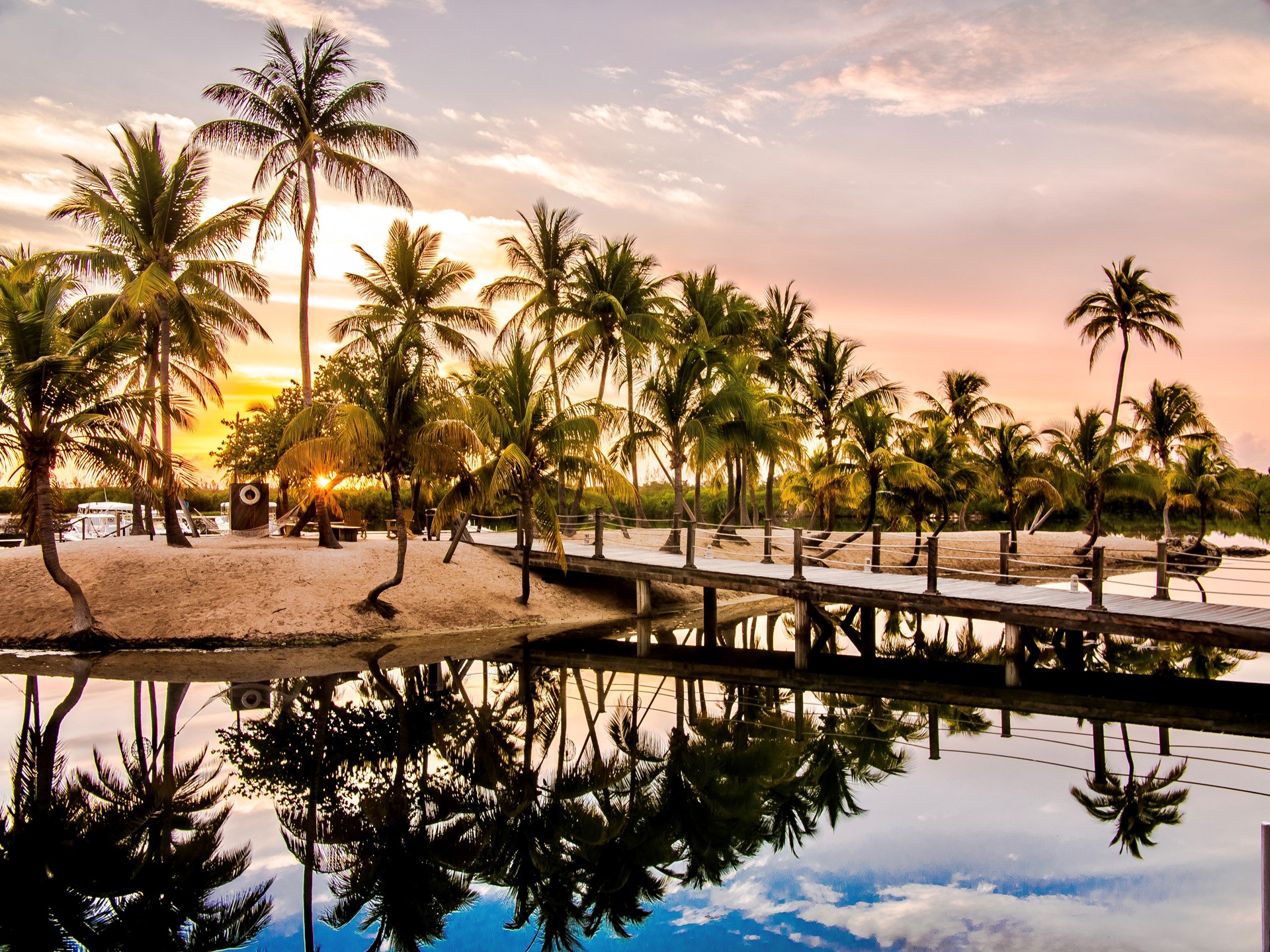

Pictured: Coconut trees on the Island in Camana Bay Harbour. Photo: Perry Levy
If there is one iconic flora in the Caribbean, it's the coconut palm.
Although many palm trees grow blissfully in the region, not all have the historic and cultural influence of the coconut palm, or boast its variety of uses.
Often referred to as the "tree of life," almost every part of the coconut palm, or Cocos nucifera, is useful to humans.
Cocos nucifera is the only known living species in the genus Cocos, which has led to great speculation of its origins. Frequently reviewed as increasingly more technology emerges, one piece of evidence that seems to be amenable to many is that there are generally two large groups of coconut palm: the Indo-Atlantic and the Pacific.
The biggest difference between the two shows up in the actual physical characteristics of their fruits, which are actually "drupes," or stone fruits. The Indo-Atlantic, or the wild coconut, has drupes that are more triangular in shape, with a thick husk that makes it more buoyant. The Pacific coconut, which evidence suggests was domesticated in South Asia as far back as the first century B.C., has drupes that are more rounded in shape, with a thinner husk, which makes them less buoyant.
Coconut palms prefer to grow in sandy soils and are highly salt tolerant. They need full sun to grow properly and to produce fruit, and they also need plenty of water and high humidity. They can be found in nearly every tropical to subtropical region around the world, sometimes even growing well with supplemental water in areas with little rain that still have high humidity.
Because most varieties grow up to 80 feet tall, it can be hard to tell which stage of maturation the drupe is in before harvesting, which is a risky endeavour. Luckily, the fruit can be eaten or used at nearly every stage of maturity. These stages can generally be grouped by "young/drinking" (more water and gelatinous flesh), "rubber meat" (less water and thicker/stiffer flesh) and "shakers" (very little water and hard flesh).
The drupes, in addition to being delicious to eat by themselves or in a wide variety of sweet and savoury dishes, are also loaded with beneficial nutrients.
The coconut palm's trunk, fronds, husks and crown also have many uses ranging from culinary to household products like baskets, mats and brooms, and even as a building material.
In Camana Bay, you can sit under a shady grove of coconut palms on the Island in the harbour, order a cocktail that contains coconut rum or coconut milk, order a salad that contains hearts of palm, enjoy a dessert that uses shredded or desiccated coconut, or even buy coconut vinegar or coconut oil at Foster's.
This article was originally published in the March 2022 print edition of Camana Bay Times.

About the author
Shannon Schmidt is Operations and Horticulture Services Manager at Dart’s Arboretum Services Ltd. Joining Dart in 2012, Shannon previously worked in parks, public gardens and tourism properties, among others. Originally from the Finger Lakes region of New York State, Shannon loves island life, spending time paddleboarding around the canals and mangroves, freediving in the sea, and spending time outdoors with her two energetic Boston Terriers Nollie and Ebbie and her equally energetic partner Chase! Shannon holds a Bachelor of Science in Recreation, Park and Tourism Management from The Pennsylvania State University and a Diploma in Horticulture from the Longwood Gardens Professional School of Horticulture.